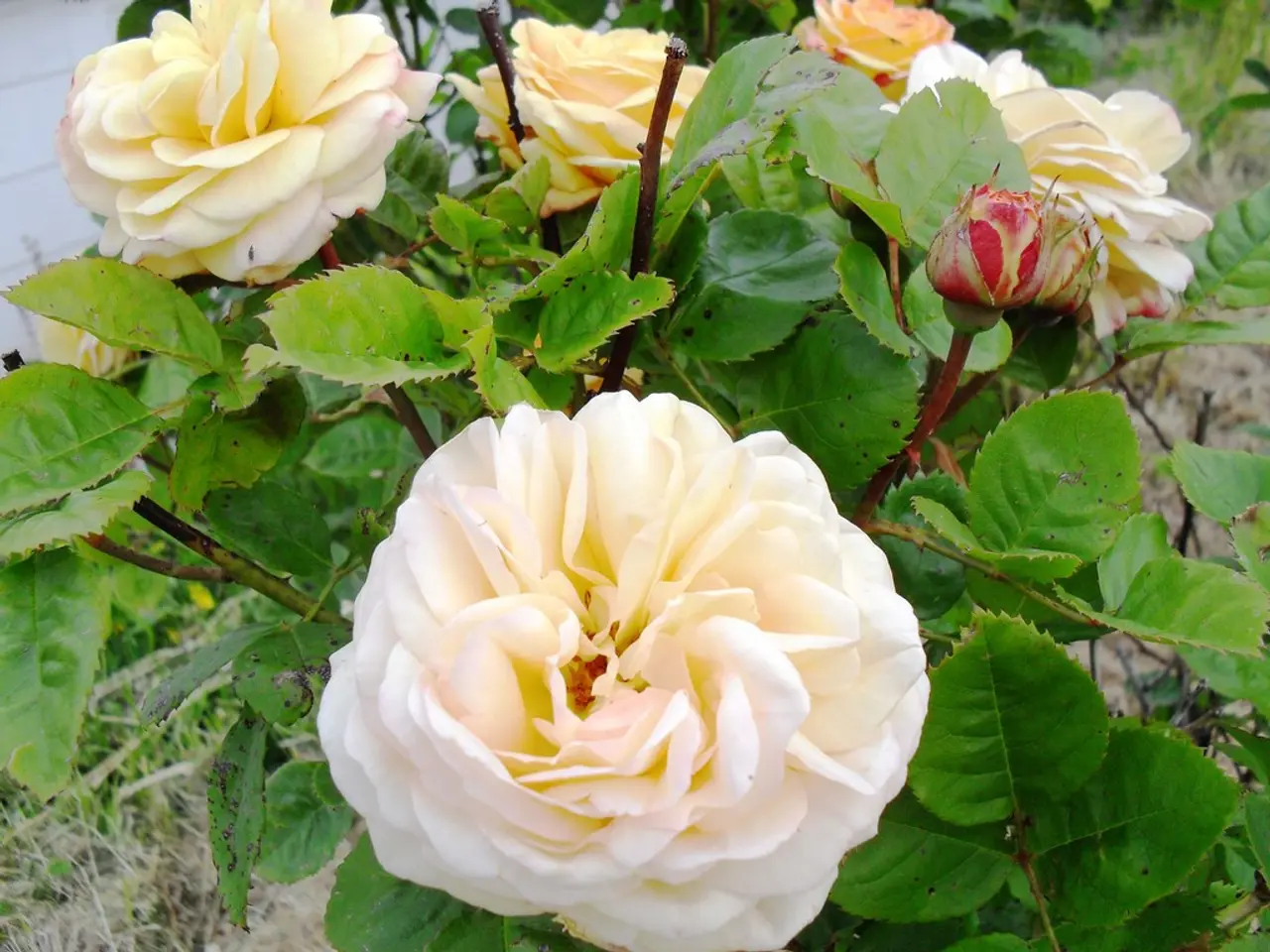Autumn Garden Tasks: Insights from Sissinghurst's Head Gardener on Seasonal Chores
Autumn Gardening at Sissinghurst Castle: A Guide
Welcome to Sissinghurst Castle Garden, where the autumn season brings a new set of tasks to maintain the garden's traditional English style. As the first frosts of the season induce a sudden surge of senescence, making the soil cold and wet, here's what you need to know about autumn gardening jobs.
Autumn Lawn Care
While specific Sissinghurst lawn care practices in autumn are not detailed, typical English garden best practices include continuing to mow the lawn as needed until growth slows, clearing leaves regularly to avoid smothering grass, and applying autumn lawn feed to strengthen roots before winter. Aeration is beneficial if the soil is compacted, and repairing bare patches by overseeding supports a healthy spring lawn.
Hedge Cutting
Sissinghurst is famous for its iconic low hedges, especially boxwood, used to define garden borders and "garden rooms." Hedge cutting at Sissinghurst focuses on maintaining clean, classic, tightly clipped shapes to emphasize structure in the garden. Evergreens such as boxwood, inkberry holly, or lavender are favored for this formal effect. Autumn is a suitable time for light shaping cuts to tidy hedges without encouraging too much new growth that could be damaged by frost.
Sowing Biennials and Hardy Annuals
Sissinghurst's exuberant and intensively planted borders incorporate a mix of annuals, perennials, and shrubs to provide continuous color and texture. For autumn sowing of biennials and hardy annuals, seeds are typically sown directly outdoors in well-prepared soil where they can establish roots before winter and bloom the following year. This aligns with traditional English garden practice to achieve profuse spring and summer flowering. Biennials sown in autumn, like wallflowers or sweet william, will overwinter and flower the next growing season, fitting well with Sissinghurst's layered planting style.
Meadow Enrichment
The wildflower species in the garden have significantly increased due to a plan of meadow enrichment. Plug-grown plants, such as primula or cardamine, are being used to top off shared plantings in meadow grass areas. Bulbs are being planted in meadow grass areas to top up any losses or shy flowerers, with a preference for species or bulbs that look similar.
The Rondel
The Rondel, a circular yew hedge in the Rose Garden at Sissinghurst, is part of the living architecture that forms the bones of the garden. The Rondel acts as a pivot between two primary vistas and provides a decompression chamber from the exuberance of Vita's planting. Annual clipping of the Rondel injects a solidity and calmness to the scene, a sense of order in the otherwise lush planting.
Additional Practices
The symphony of colors in the garden includes faded Venetian red sedums and burning torch Euonymus alatus. The semi-parasitic annual yellow rattle, Rhinanthus minor, is being grown to weaken the grass sward. Troy Scott Smith advises against watering the borders at Sissinghurst. Seeds are being collected from midsummer until the new year, with careful timing to avoid seed failure or bird consumption.
October at Sissinghurst
Hardy annuals are being sown in September and October, including Ammi, Nigella, Centaurea, Atriplex, Orlaya, Cosmos, and white poppy. The Orchard and meadow areas are being used for planting simple bulbs, such as Narcissus pseudonarcissus and Narcissus poeticus 'Recurvus.' Biennials are being moved into their flowering position in the garden between mid-October and late November.
References:
[1] Sissinghurst Castle Garden: A Vision for the Modern Garden, by Troy Scott Smith [2] The White Garden: A Garden in Two Colours, by Vita Sackville-West [3] The Gardens of Sissinghurst, by Christopher Lloyd [4] The Complete Gardener, by Christopher Lloyd [5] The English Garden, by Christopher Lloyd
- Embracing the lifestyle of home-and-garden enthusiasts, autumn gardening in Sissinghurst Castle unlocks a variety of tasks to maintain the gardens' traditional English charm, such as sowing biennials and hardy annuals, like wallflowers or poppies, directly in the soil for blossoms the following year.
- As a testament to gardening expertise, Sissinghurst's iconic gardens showcase the art of maintaining clean and classic low hedges, such as those made of boxwood or inkberry holly, even during the colder autumn months.
- Luxuriate in the endless colors of the garden season as you follow the lead of Sissinghurst Castle's gardening practices, choosing flowers like Ammi, Nigella, or Cosmos, and plants like sedums or burning torch Euonymus alatus, to enrich your own gardens with their beauty.




